
Our destination today is Eagle Creek. This is, with good reason, the most popular
hiking trail in the Columbia River Gorge. On nice spring and summer weekends it is
teeming with hikers vying for space, but on a mid-
It is not a difficult hike. The trail climbs steadily but very gradually, and you
really are not aware of high you have climbed until you realize how far down the
creek is, as you look through the treetops to see it meandering its way through the
canyon, and as you try not to fall off the sheer drop-
There is a surprising amount of snow at the trailhead and still hanging on in patches
in the woods along the trail, and in a few spots, where direct sun never reaches,
ON the trail, making for precarious going, especially where the trail is narrow and
the drop-
The Eagle Creek hike can be as long or short as one chooses, as it eventually continues
on beyond the boundary of the designated wilderness. Many hikers use it as a starting
point for backpacking trips. But we only have time for the short version today, about
2 miles in, to Punchbowl Falls, the most popular turn-
Look at this! Look at this! Look at this moss with these bright green-
Look at that long thin stream of water meandering its way down the cliff through the trees across the way, a secret waterfall only observable when the leaves are off the trees; the sinuous shapes of the exposed roots that have aged to a point where the bark of the roots are indistinguishable from the bark of the trunk and branches; the detail in a patch of lichen encrusted on a rock face.
The moss – the moss – I can’t get enough of it. I know more of their names now. I know that lanky Isothesium and plushy Metanekera (the tiny leaves of Metaneckera are translucent and wavy and quite beautiful when seen under a dissecting microscope) are the 2 most common mosses found on the Big Leaf Maples here, making up the bulk of what we see when we look up. Making their home there also, are numerous others, like the small but plushy pads of Dicranum with all of its tiny narrow leaves curved to one side, and Porella, a liverwort masquerading as a moss. Big Leaf Maples (Acer macrophyllum) are almost completely covered with moss in these misty, moist environments. There is so much moss that the air itself seems to be infused with green. Cool green mist hangs everywhere, or so it seems to us, touching our skin, enclosing us, keeping everything damp.
We are at an even level with the tree tops of those that rise from deeper in the canyon, but we are dwarfed by the trees along our path that rise so much higher still. We can see the many layers of basalt flows that created this landscape over the last 40 million years, revealed in the cliffs across the chasm.
We are engulfed, puny, yet we are a part of it, and it, of us. It feels enchanted, somewhat mystical, or should I say, mistical? There are old growth Douglas Fir trees here (Pseudotsuga menzeisii), towering and massive, with deeply, deeply, furrowed bark. It feels very powerful. We have had some wild storms and an uncharacteristic amount of snow this year, and there are lots of new branches down, large and small. We see the occasional tree that has been uprooted, heading downward on a steep slope, root ball pointed to the sky. Subject to weather extremes, steep slopes, and saturated soil, winter sees its share of downed trees each year.
The decaying logs and old tree stumps become worlds of their own. There is so much life in a decaying stump, more life forms then when the tree was thriving, really, living organisms doing their job, breaking it down. It is just a different stage of life, with bacteria gone wild, microscopic and macroscopic insects, lots of mosses, lichen, fungi, home perhaps to rodents, maybe a bird. Shrubs and herbaceous plants take root and grow. Maybe a snake or salamander will find a home beneath a piece of wood. I read once that it takes about as long for a tree to decay as it did to grow. I can’t find this reference now, and it may not be true for all trees, but it makes sense. And as the wood decays and softens, as the moss grows and humus builds, it becomes a perfect bed for seedlings, and often a tree seed will take root then, sending its roots down the sides of the stump and the stump becomes a nurse log, feeding its progeny with its slowly released nutrients as it decays. An evenly spaced row of trees at the same stage of growth are a sure sign that tree seedlings took root along a fallen log at about the same time, spacing themselves naturally to take advantage of available food, light, and water. Usually those trees will be raised up somewhat, as they grew above ground level on the back of a log.
Years of observation have taught me something about reading the landscape, but it’s
a long story, with much to learn. The natural world only gets more complex the closer
we look. The trees, the rocks, the moss, the lichen, the understory plants, the insects
-
Field Tripping
Hiking the Eagle Creek Trail in the Columbia River Gorge February 5, 2009
A MISTICAL DAY
Collector's Nursery,16804 NE102nd Ave, Battle Ground, WA 98604, 360-
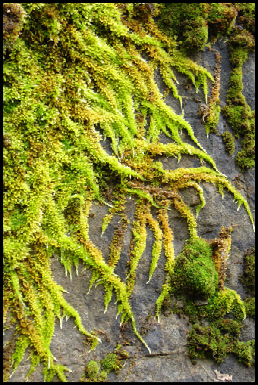
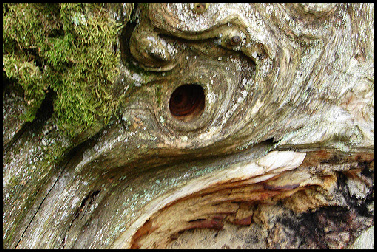
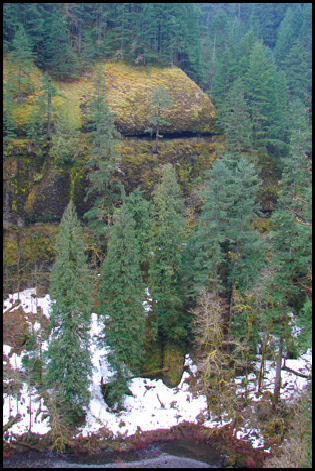
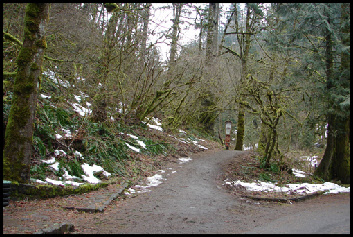
Eagle Creek Trailhead
40 million years of basalt flows
Secret faces
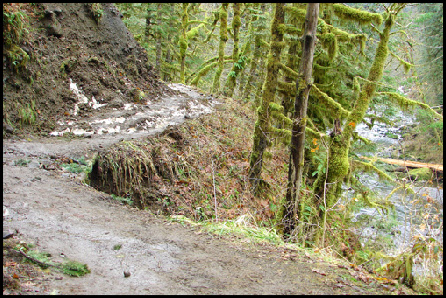
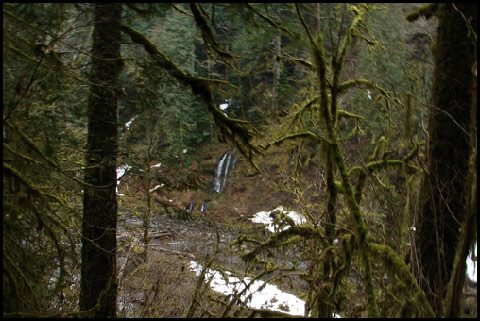
Through the Trees





